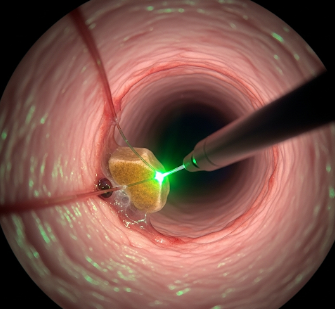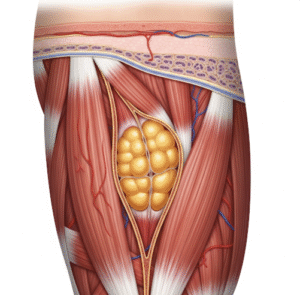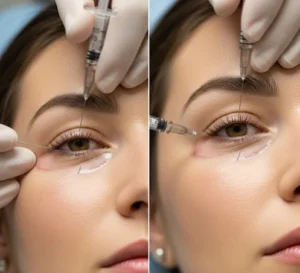Overview
Ureteroscopy is a minimally invasive procedure used to examine and treat problems in the ureters—the tubes connecting the kidneys to the bladder. It is commonly performed for kidney stones, strictures, or tumors in the ureter.
South Korea is a global leader in urological procedures, offering advanced ureteroscopes, laser lithotripsy, and expert urologists. Patients benefit from high success rates, minimally invasive treatment, and fast recovery.
What is Ureteroscopy?
Ureteroscopy involves inserting a thin, flexible or rigid scope through the urethra and bladder into the ureter.
Uses include:
- ➤ Removal of kidney or ureteral stones
- ➤ Treatment of ureteral strictures
- ➤ Biopsy or treatment of tumors in the ureter
- ➤ Precise visualization of the ureter for diagnosis and intervention
Types of ureteroscopes:
- ➤ Flexible ureteroscope: Allows navigation through curved ureters and small stones
- ➤ Rigid ureteroscope: Used for straight ureters and larger stones
What are the Benefits?
✔ Minimally invasive with no external incisions
✔ High stone removal success rates
✔ Short hospital stay (often outpatient)
✔ Reduced pain and faster recovery
✔ Precise visualization and targeted treatment
✔ Korean hospitals use advanced laser lithotripsy for effective stone fragmentation
Procedure Details:
1) How should I prepare for Ureteroscopy?
- ● Preoperative tests: Blood tests, urine analysis, and imaging (CT scan or X-ray)
- ● Medication adjustments: Blood thinners or certain medications may be paused
- ● Fasting: Usually 6–8 hours before surgery
- ● Anesthesia preparation: General or spinal anesthesia may be used
- ● Korean hospitals: Provide clear instructions and multilingual guidance
2) What happens during the procedure Ureteroscopy?
- ➤ Anesthesia: Patient is sedated or under general/spinal anesthesia
- ➤ Scope insertion: A thin ureteroscope is inserted through the urethra and bladder into the ureter
- ➤ Stone treatment: Laser lithotripsy or basket extraction is used for stone removal
- ➤ Inspection: The ureter is examined for strictures, tumors, or other abnormalities
- ➤ Duration: Typically 30–90 minutes depending on stone size or complexity
- ➤ Korean advantage: Hospitals use flexible ureteroscopes and high-precision lasers for safe, effective treatment
3) What happens after a Ureteroscopy?
- ● Recovery: Monitored in post-anesthesia care for a few hours
- ● Stent placement: Temporary ureteral stent may be placed to aid healing
- ● Pain management: Mild discomfort treated with medication
- ● Hydration: Drink plenty of fluids to help flush the urinary tract
- ● Follow-up: Stent removal usually within 1–2 weeks; imaging follow-up may be required
Risks / Benefits
✔ Benefits:
- ✦ Minimally invasive, no external cuts
- ✦ Effective stone removal and treatment of strictures
- ✦ Fast recovery and short hospital stay
- ✦ Precise, targeted treatment with advanced lasers
⚠ Possible Risks (rare):
- ➔ Infection of urinary tract
- ➔ Mild bleeding or hematuria
- ➔ Ureteral injury or perforation
- ➔ Discomfort from stent (if placed)
- ➔ Rare need for repeat procedure
Recovery and Outlook
- ➤ Immediate recovery: Most patients can go home the same day or after an overnight stay
- ➤ Pain: Mild discomfort or burning during urination is common for a few days
- ➤ Full recovery: Usually 1–2 weeks depending on stent placement
- ➤ Stone-free rate: High success with laser lithotripsy in Korean hospitals
- ➤ Korean advantage: Specialized urologists and advanced equipment ensure safe, effective, and precise outcomes
When To Call the Doctor
Contact your doctor if you notice:
- ⚠ Persistent or severe pain
- ⚠ Fever or chills
- ⚠ Heavy blood in urine
- ⚠ Difficulty urinating or urinary blockage
- ⚠ Stent-related severe discomfort
Best Korea Option / Process
South Korea is a leading destination for ureteroscopy due to:
- 🌟 Expert urologists trained in laser lithotripsy and flexible ureteroscopy
- 🌟 Minimally invasive, outpatient-friendly procedures
- 🌟 High success rates with advanced imaging and lasers
- 🌟 Multilingual support for international patients
- 🌟 Comprehensive follow-up and stent management
Top Korean Hospitals for Ureteroscopy:
- ✅ Seoul National University Hospital (Urology Dept.)
- ✅ Asan Medical Center
- ✅ Samsung Medical Center
- ✅ Severance Hospital (Yonsei University)
- ✅ Bundang CHA Hospital (Advanced Urology Center)
✅ Quick Highlights Recap
- ➤ Ureteroscopy examines and treats ureteral problems, including stones and strictures
- ➤ Minimally invasive, precise, and outpatient-friendly
- ➤ Fast recovery and high success rates
- ➤ Rare risks, mostly manageable
- ➤ Korean hospitals provide advanced lasers, flexible scopes, and expert urologists













